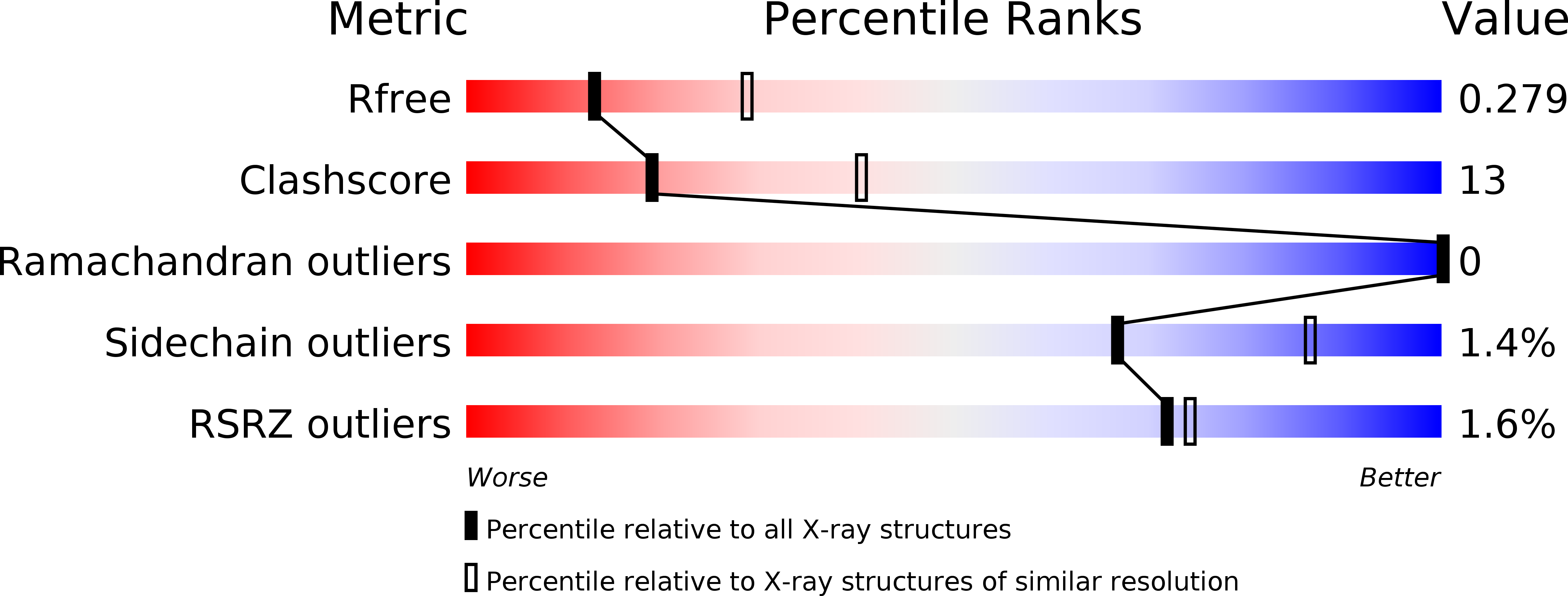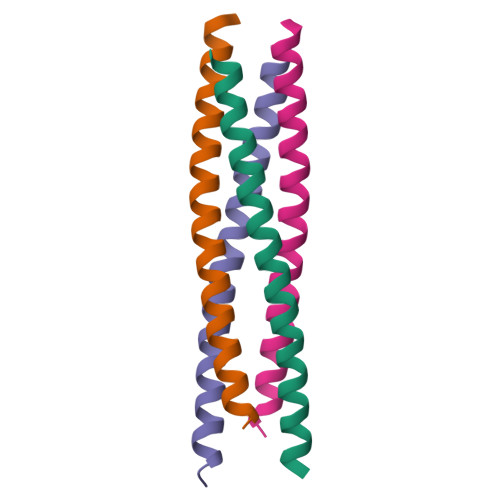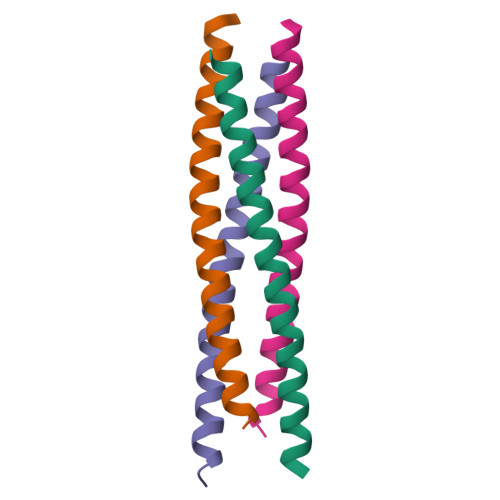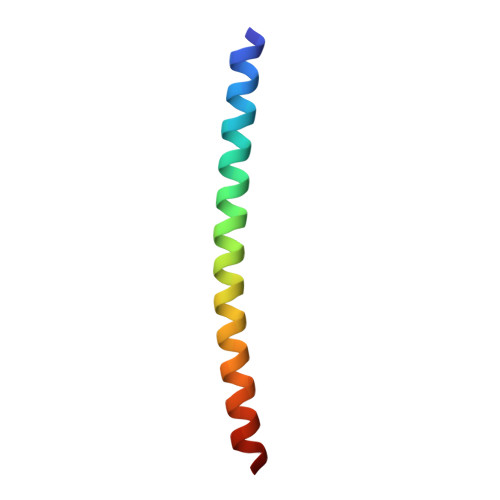New tetrameric forms of the rotavirus NSP4 with antiparallel helices.
Kumar, S., Ramappa, R., Pamidimukkala, K., Rao, C.D., Suguna, K.(2018) Arch Virol 163: 1531-1547
- PubMed: 29455326
- DOI: https://doi.org/10.1007/s00705-018-3753-6
- Primary Citation of Related Structures:
5Y2E, 5Y2H, 5Y2J - PubMed Abstract:
Rotavirus nonstructural protein 4, the first viral enterotoxin to be identified, is a multidomain, multifunctional glycoprotein. Earlier, we reported a Ca 2+ -bound coiled-coil tetrameric structure of the diarrhea-inducing region of NSP4 from the rotavirus strains SA11 and I321 and a Ca 2+ -free pentameric structure from the rotavirus strain ST3, all with a parallel arrangement of α-helices. pH was found to determine the oligomeric state: a basic pH favoured a tetramer, whereas an acidic pH favoured a pentamer. Here, we report two novel forms of the coiled-coil region of NSP4 from the bovine rotavirus strains MF66 and NCDV. These crystallized at acidic pH, forming antiparallel coiled-coil tetrameric structures without any bound Ca 2+ ion. Structural and mutational studies of the coiled-coil regions of NSP4 revealed that the nature of the residue at position 131 (Tyr/His) plays an important role in the observed structural diversity.
Organizational Affiliation:
Molecular Biophysics Unit, Indian Institute of Science, Bangalore, India.
















